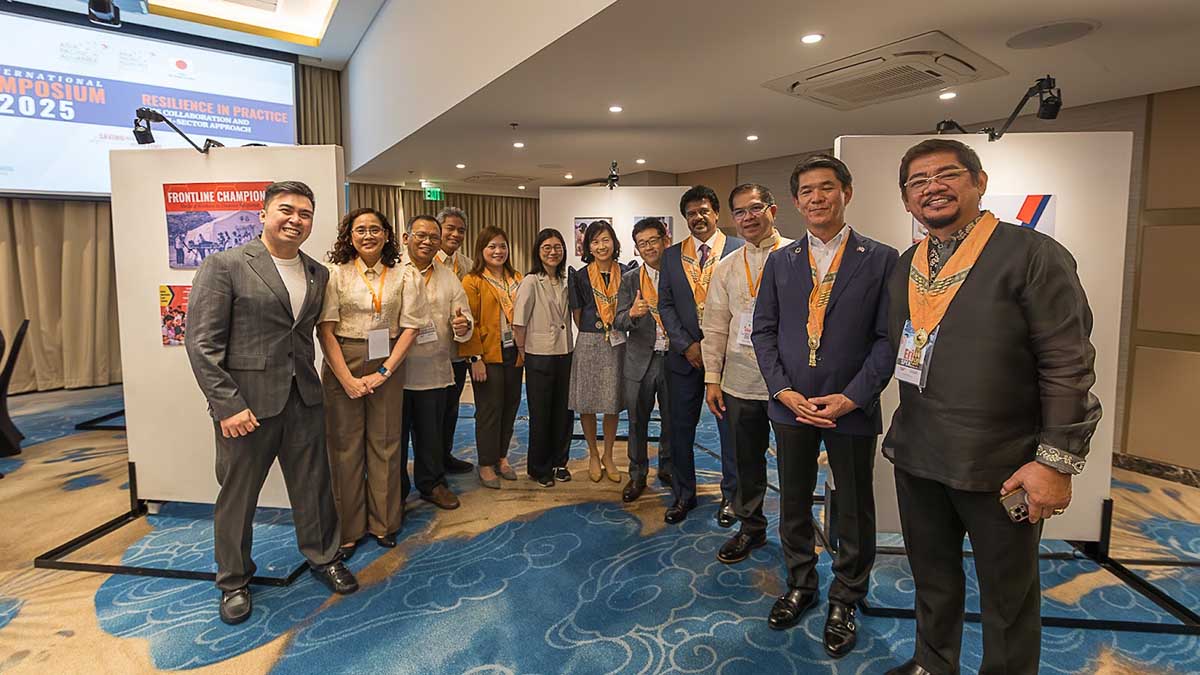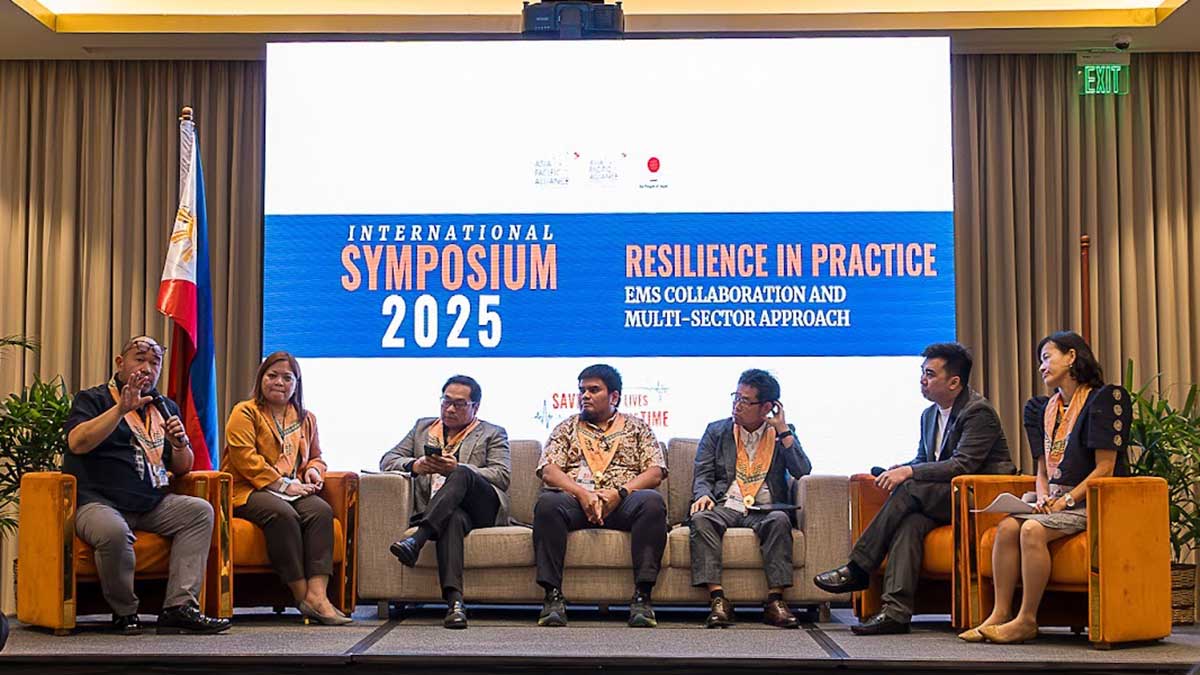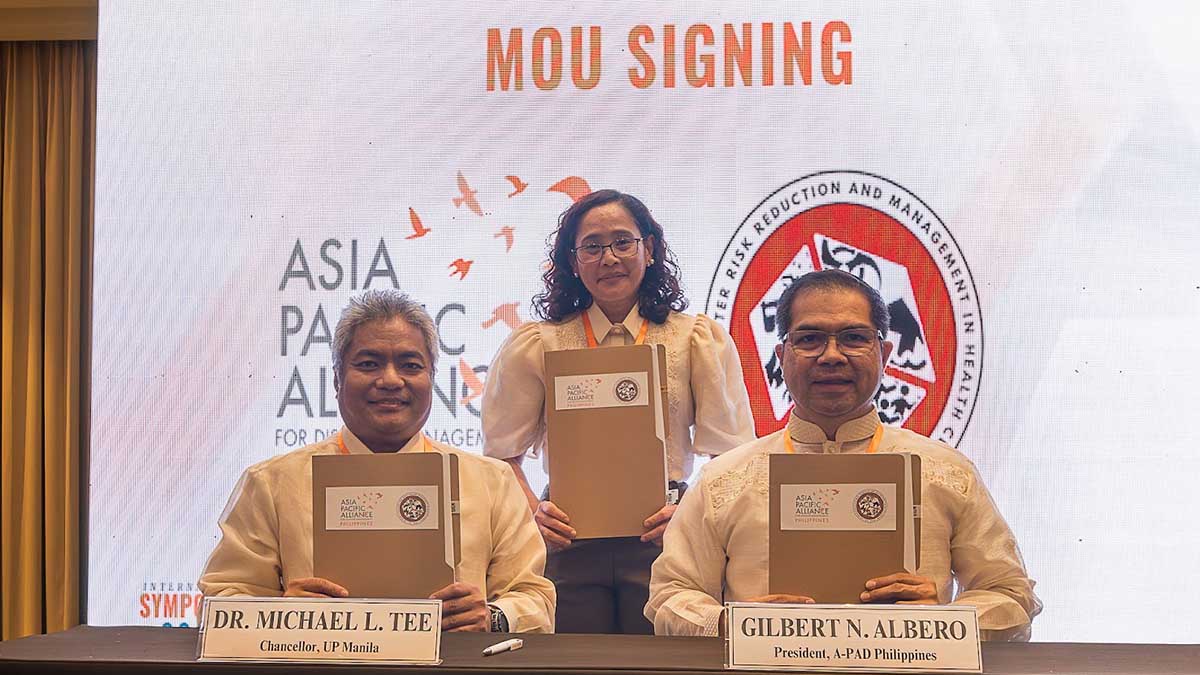
The Asia Pacific Alliance for Disaster Management (A-PAD) Philippines convened its International Symposium 2025 on September 17 at the Grand Westside Hotel, Parañaque City, bringing together national and international partners to strengthen Emergency Medical Systems (EMS) and promote multi-sector collaboration in disaster preparedness and response.
With the theme “Resilience in Practice,” the event brought together leaders from government, the private sector, academe, civil society, medical institutions, and volunteer groups, demonstrating that true resilience is built through partnership.
“Resilience is not built in isolation. It is built in the bridges we form, the hands we extend, and the lives we touch,” he said, underscoring the importance of solidarity and sustained cooperation in disaster response, A-PAD Philippines President Gilbert Albero said in his welcome remarks.
Amid increasingly complex disasters, the symposium emphasized the urgent need to strengthen EMS frameworks and coordination across sectors.
“The Asia-Pacific is home to 75% of the world’s disaster-exposed population, yet we continue to contribute strongly to the global economy. Our true strength lies in working together to ensure communities are empowered and no one is left behind,” said Mr. Firzan Hashim, Chief Operating Officer of A-PAD International.
The symposium also marked the culmination of A-PAD’s three-year project under the Japan Grant Assistance for Japanese NGO Projects, which focused on emergency preparedness, volunteer engagement, and EMS capacity development. A visual gallery was also featured, showcasing the project’s impact and the collective journey of partners working together for resilience.

Japan’s Ambassador to the Philippines, His Excellency Kazuya Endo, in his speech, commended A-PAD’s efforts in advancing disaster medicine and multi-sector collaboration and expressed his support for continuing work.
“When crises strike, medical assistance must remain a reliable lifeline for agile response. A-PAD’s work reflects the spirit of cooperation that both Japan and the Philippines share in building disaster-resilient societies,” His Excellency Kazuya Endo said.
Representing the Philippine government, Assistant Secretary Dr. Gloria J. Balboa of the Department of Health and Director Jose Harry M. Barber of the Office of Civil Defense underscored the state’s continuing efforts to enhance the nation’s emergency medical systems and disaster response readiness.

Resilience in Practice: A Multi-Sector Dialogue
At the heart of the symposium was the panel discussion “Resilience in Practice: EMS Collaboration and Multi-Sector Approach,” moderated by Dr. Jeremy A. Cordero, outgoing President of the Philippine College of Emergency Medicine.
Panelists included Dr. Frederick Francisco of the Philippine Medical Association, Dr. Bernadette Velasco of the Department of Health, Dr. Mototaka Inaba of Peace Winds Japan/ARROWS, Dr. Benedict Edward Valdez of the Southern Philippines Medical Center, Dr. Yui Sekitani of the World Health Organization – Philippines, Dr. Airi Mutiar of Airlangga University in Indonesia, and Mr. Arnel Capili of the Philippine Disaster Resilience Foundation (PDRF).
The discussion explored challenges in the Philippines’ EMS landscape, such as fragmented systems among LGUs, uneven access to trained responders and ambulances, and the need for stronger interoperability among agencies.

Dr. Airi Mutiar shared Indonesia’s “pentahelix” model, which unites academia, government, communities, media, and the private sector for coordinated disaster response. “There is no novelty in disaster and emergency cases. We must constantly learn, adapt, and adopt from others’ experiences,” he said.
From the private sector perspective, PDRF’s Mr. Arnel Capili showcased the organization’s digital dashboard system, which maps private sector relief operations to improve transparency and coordination. “Data-sharing and collaboration are key to ensuring that no community is left behind,” he emphasized.
Dr. Bernadette Velasco stressed the importance of coordination and resource mapping to prevent redundancy and ensure equitable assistance. Supporting her insights, Dr. Yui Sekitani noted that data interoperability remains a major challenge, as organizations often collect and report data in different ways. WHO, she said, continues to support the Philippines in mapping out who is providing what kind of support, where, and with what resources to help make disaster response more efficient.
Meanwhile, Dr. Benedict Edward Valdez emphasized that emergency response requires a systematic approach rather than a purely clinical one, calling for interoperability and integration across care systems to improve outcomes during crises.
From Peace Winds Japan, Dr. Inaba shared his firsthand experiences in providing cross-border humanitarian medical assistance, underscoring the opportunities and challenges of international cooperation during disasters.

Honoring and Forging New Partnerships
The symposium also recognized institutions that have worked with A-PAD Philippines to strengthen disaster preparedness and community resilience. Led by Dr. Ana Liza Macatangay, Secretary of the A-PAD PH Board of Trustees, the recognition ceremony honored partners from the academe, business, civil society, and local government who have been instrumental in implementing resilience initiatives across the country.
Awardees included Northwestern University, Bicol University, University of Cebu Lapu-Lapu Mandaue, Holy Trinity College, Metro Naga Chamber of Commerce and Industry, Albay Chamber of Commerce and Industry, Cebu Chamber of Commerce and Industry, Surigao Chamber of Commerce and Industry, the Philippine Medical Association, the Philippine Disaster Resilience Foundation, Albayanihan, and the Ormoc City Local Government Unit.
The ceremony reflected the shared spirit of action and collaboration among partners committed to building safer, more resilient communities.

In the light of expanding and forging new partnerships, A-PAD Philippines and UP Manila signed a Memorandum of Understanding (MOU) to strengthen cooperation in health emergency management and disaster risk reduction.
As the symposium concluded, participants reaffirmed a shared goal: to make resilience a collective practice rooted in collaboration. “We cannot predict the next disaster,but we can prepare together. Because resilience is not a destination—it’s a collective journey,” Albero said.